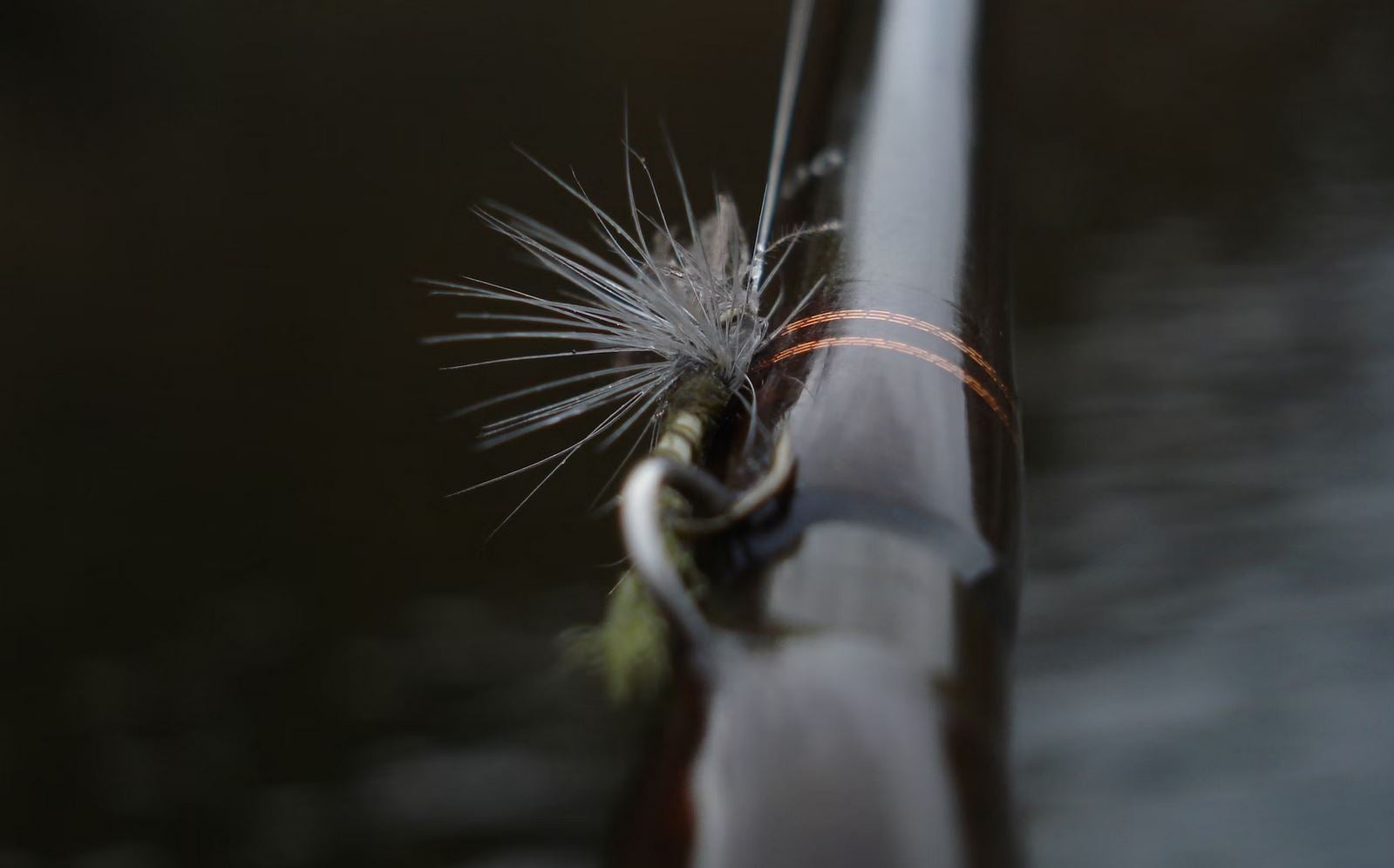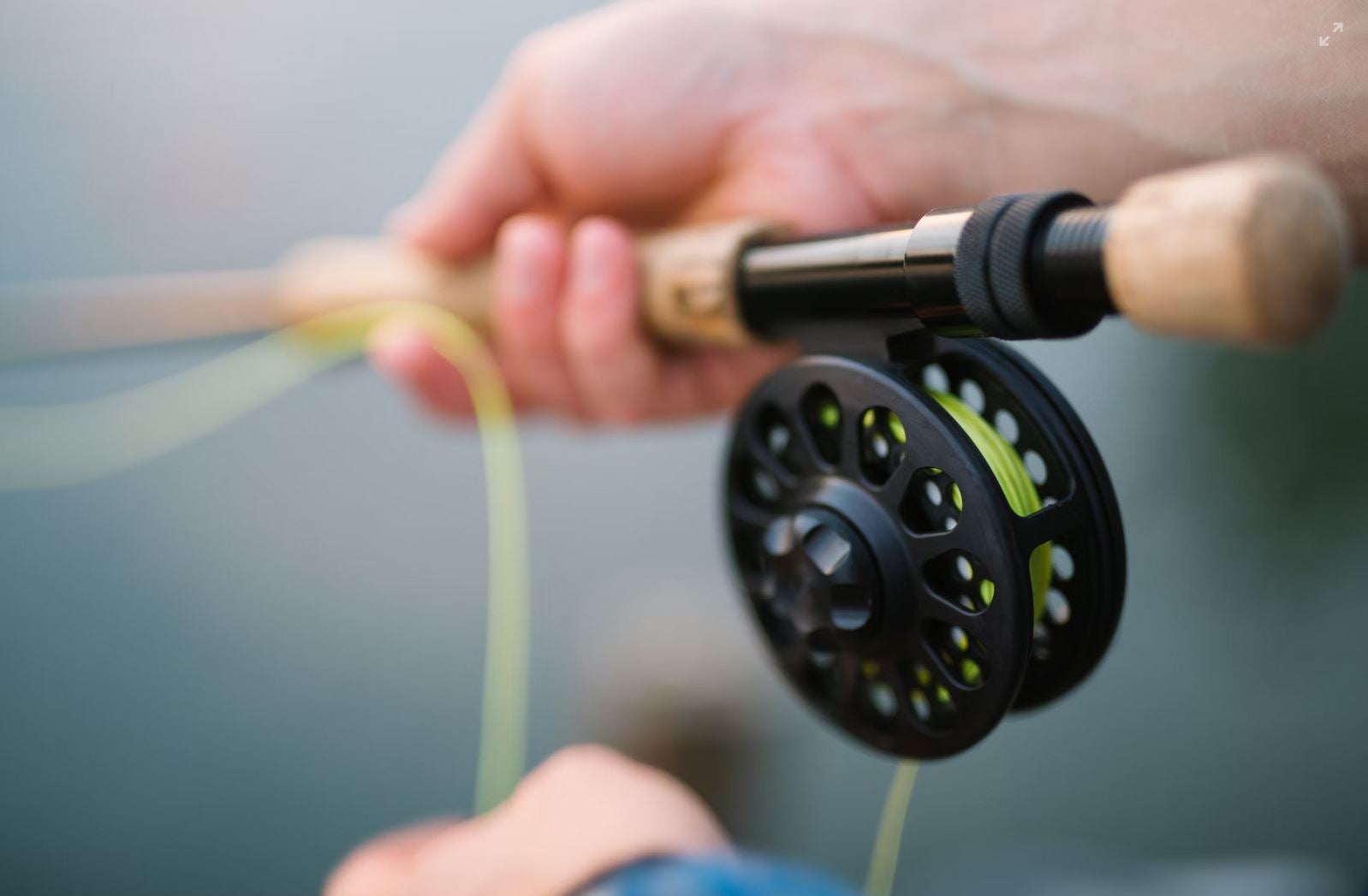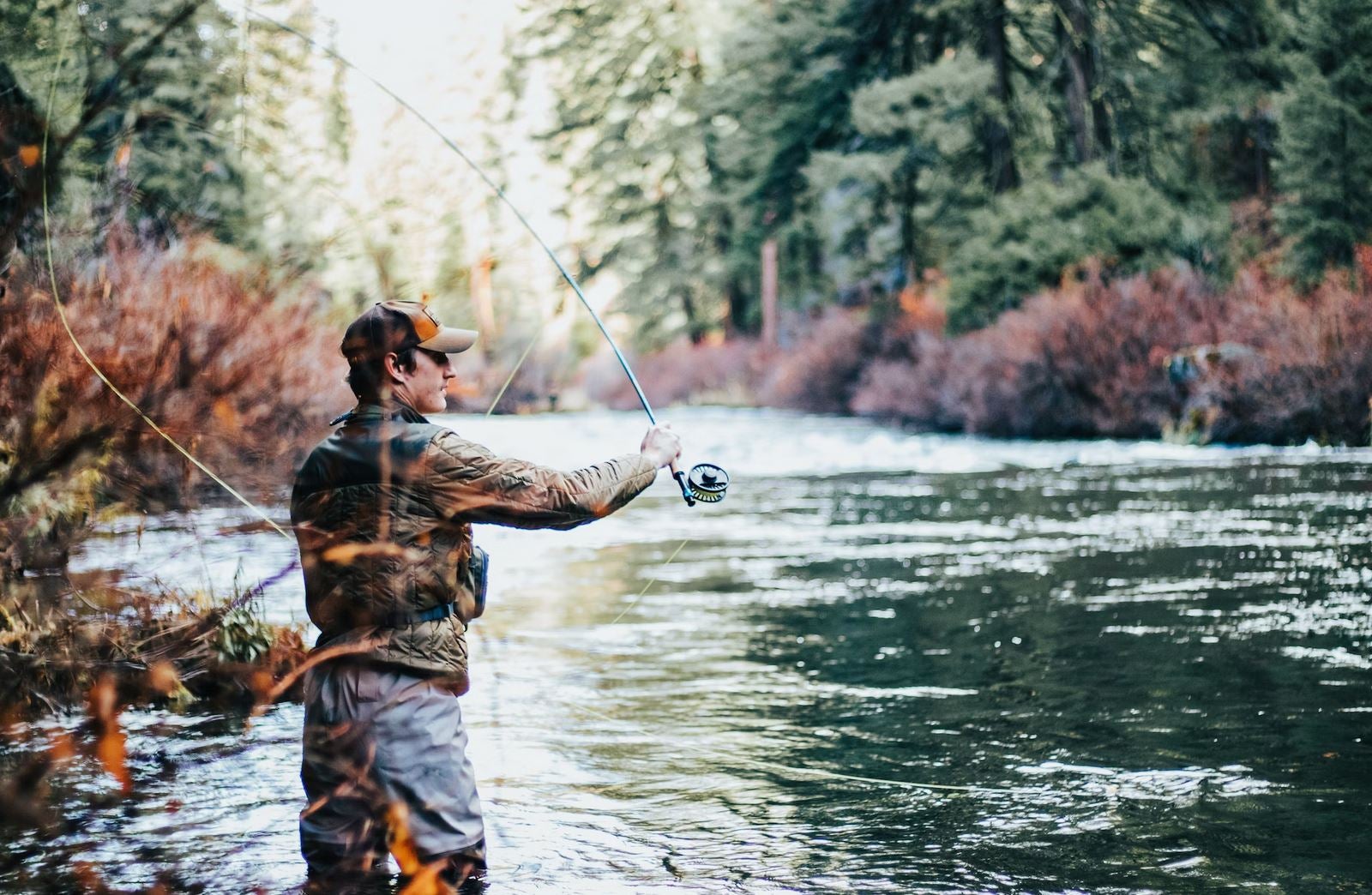Beginner’s Guide to Picking The Right Fly Fishing Rod
Travis Olander 06.19.23

So, you want to get into fly fishing. Great! Now, you’ve started the long, arduous journey through Google: researching rods, reels, flies and lures, finding the best waders, and learning the differences between a dry and wet fly. The list goes on. That’s because unlike regular fishing, fly fishing is a complex art involving subtlety and nuance. Any new angler can get lucky and snag a fat Largie with a juicy live worm on a cheap Shakespeare spinner. But, catching a trophy trout with a fly fishing rod requires perfecting the cast and using the right gear from reel to tippet.
What Fly Fishing Rod is Best For a Beginner?
Don’t feel like reading a wall of text? Here’s the TL;DR. Grab a 4-weight to 6-weight rod that measures 8’6″, with medium-fast action. This is the gold standard setup for catching just about everything you’ll ever hunt, short of bagging saltwater mammoths or chasing tiny lil’ sunfish in a 3-foot pond. But you’re a smart beginner, and you want to know everything there is to know about picking the perfect fly rod. So let’s dive into what, exactly, fly rod weights mean. Then we’ll cover action and rod material, and help you pick a perfect rod in the mid-range prices.
Fly Rod Weight Explained
Fly rod weight determines the strength of a rod. The higher the weight, the greater the strength. Fly rod weight dictates what you can and can’t catch. Weight is usually abbreviated as “wt”. If, for example, you see a rod advertised as a “10wt9”, that means it’s a 10-weight rod measuring 9 feet in length. You might not see “wt” at all, and will instead see a series of 3 or 4 numbers. A rod advertised as “896” will be an 8-weight rod measuring 9 feet, 6 inches. Use these general guidelines to determine what fly rod is best for your chosen targets and fisheries:
- 1 to 4 Weight: For small Trout and Sunfish in small streams.
- 4 to 6 Weight: For typical Trout and Smallies in medium to large rivers and lakes.
- 6 to 8 Weight: For Largies, Stripes, Carp, Small Steelheads and Salmon in medium to large rivers and lakes.
- 8 to 10 Weight: Large Steelhead, Salmon, and Bonefish in all freshwater and inland saltwater.
- 10 Weight and Up: Tarpon, Sailfish, and large game in open saltwater.
Although there is a rough correlation, fly rod weight is not the same as rod action. A light rod can have slow action, while a heavy rod can still provide relatively fast action. Let’s clear that up.
Fly Fishing Rod Weight vs. Line Weight
We’re going to keep this short, since we’re discussing rods. But generally, you should always match your fly rod’s weight to fly line weight. That means you should use 5-weight line on a 5-weight rod, 8-weight line on an 8-weight rod, and so on. Ensuring this harmony is critical. Remember, it’s the weight of the line – not the rod nor the lure – that determines casting distance, presentation, and accuracy in fly fishing.
A note on “overlining” a rod. Maybe you’re reading this after you started fly fishing. Perhaps you’ve got a heavy rod with fast action (more on that next) and you’re struggling to feel the load on the line when casting. You can remedy this and improve your beginner casting skills by overlining the rod. That means spooling a heavier-weight line than the weight of the rod. The heavier line will put more bend in the rod, making it easier to feel out and direct your cast.
Fly Fishing Rod Action: What’s Best, and When?
Rod action is simply the flex, or “bendiness,” of the fly rod. Rod action is critically important in fly fishing, since it plays a major role in loading your line when casting.
Slow Fly Rod. A slow rod provides flexibility along the entire length of the shaft. Slow-action rods provide a gentler stroke with less line speed. That means less power is transferred into the tippet and lure, which makes it ideal for presenting a small, light dry fly on the top of the water. This “soft” presentation provides excellent mimicry and is great for gentle streams and lakes with low wind and no tide.
Casting a slow-action rod takes some patience and really perfecting your form. Because the entire length of the rod is “bendy,” it takes skill to properly aim and load the rod and line to achieve a good, accurate cast. Slow-action rods provide a long pause on the backswing, which can cause new anglers to exaggerate movements and accidentally set their hook in whatever brush, tree, or debris is behind them.
Medium Fly Rod. The “do-it-all” rod provides medium action. The shaft bends approximately half the entire length of the rod, and it’s capable of managing dry flies, wet flies, nymphs, and streamers without much fuss.
Learning to cast on a medium-action rod is best for beginners. The medium action provides a great balance of precision and flex, allowing for mastery of the basic cast and roll casting. It also reduces the pause on the backswing of the cast, preserving momentum in the line and helping to prevent dropping your hook behind you.
Fast Fly Rod. The fast action rod is the stiffest. It requires a little extra power and speed to cast effectively, but it allows for great distance and casting heavy, big flies. The fast action is also best for windy days and narrow windows, where debris and brush might restrict your total range of motion — lest you cast wdide and hook a branch, losing that fancy new fly you just bought.
For beginners, we reiterate that you should stick with a medium or medium-fast action fly rod.
The Ideal Fly Rod Length
Fly rod lengths don’t vary as much as standard fishing rods. That’s because length plays a role in action and weight. Fly rod lengths need to be in a certain “Goldilocks” zone for proper flex, loading, and casting.
- 9-Foot Rods: 9-foot rods are some of the most common fly rods on the market today. Averaging 4- to 6-weight, they’re the most versatile and can handle small, light dry flies and heavier streamers all the same.
- 8-Foot-6 Rods: Rods measuring 8’6″ tend to provide faster action and aren’t as well-suited for dry flies as 9-footers. But they excel at handling streamers and nymphs. They also reduce backswing pause and are best for beginners.
- < 8-Foot Rods: Shorter rods are primarily used for smaller bodies of water and areas where a tight casting window is needed to avoid brush and debris. Landing a dry fly with a rod measuring under 8 feet takes some real skill, but it can be done with a medium action and some practice.
- 9-Foot Rods: Rods exceeding 9 feet are capable of providing the most realistic presentations. They’re difficult to use in any sort of confined space and small waters, and are usually reserved for larger rivers and lakes with little debris. If attracting finicky fish with dry flies is your ultimate goal, consider one of these long rods.


